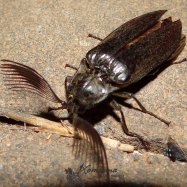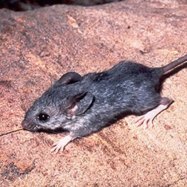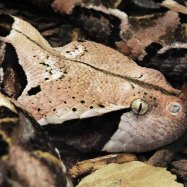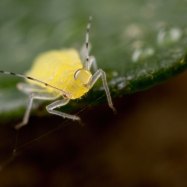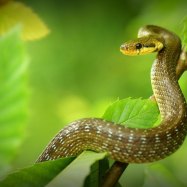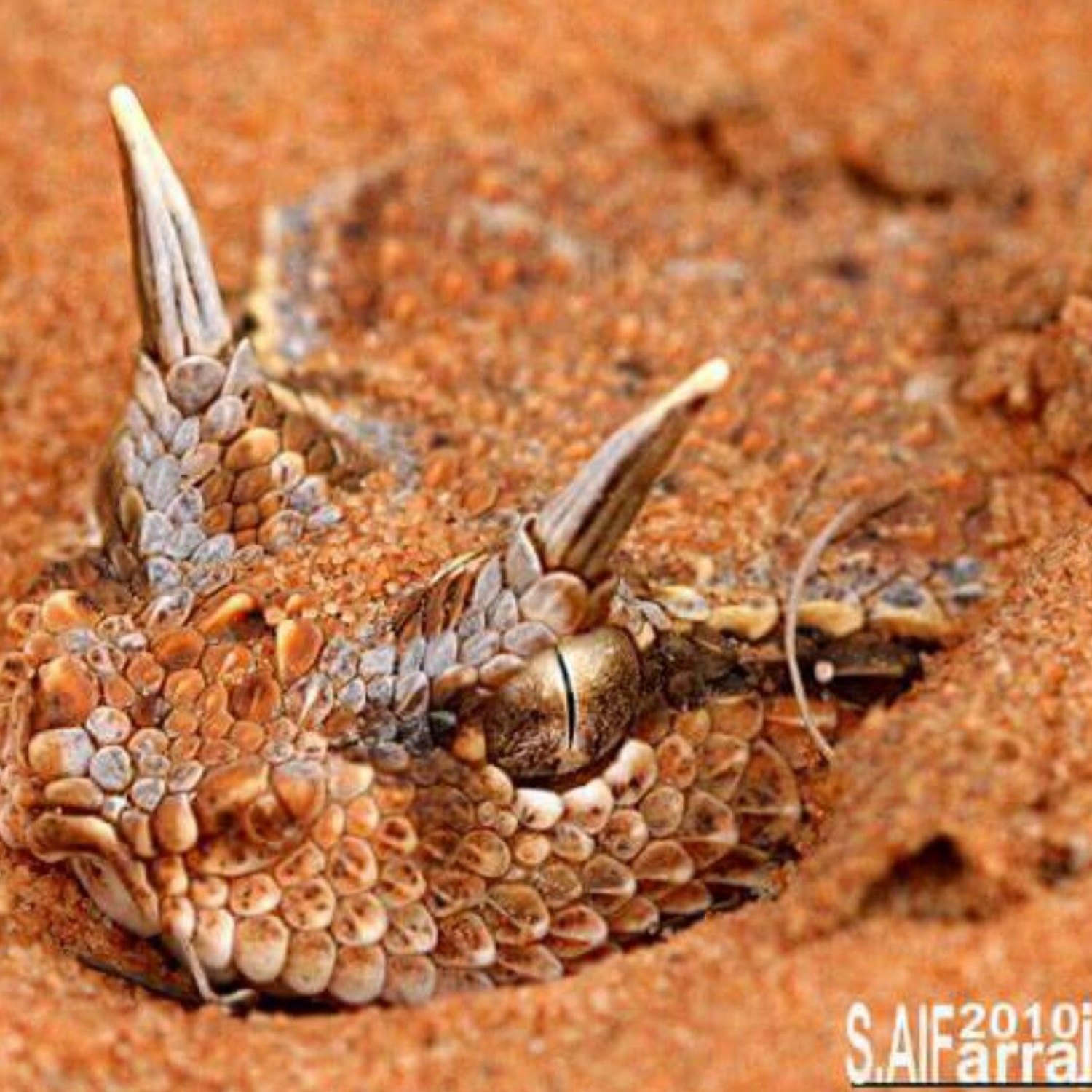
Horned Viper
60-85 cm
The Horned Viper, found in the Sahara Desert, is a venomous snake with a length of 60-85 cm. Its stocky, robust body is characteristic of the Viperidae family. These snakes are commonly known as adders and use their iconic long, curved fangs to inject venom into their prey. Despite their intimidating appearance, they play an important role in maintaining the delicate ecosystem of the desert. #HornedViper #SaharaDesert #Viperidae #VenomousSnake
Animal Details Summary:
Common Name: Horned Viper
Kingdom: Animalia
Habitat: Deserts and arid regions
The Horned Viper: A Fascinating Creature of the Desert
The Sahara Desert is known for its vast, arid landscape and extreme temperatures that can reach up to 50 degrees Celsius. It is not a place where one would expect to find any form of life, let alone a venomous reptile. However, in this seemingly inhospitable environment, there exists a creature that is perfectly adapted to survive – the Horned Viper.Also known by its scientific name, Cerastes cerastes, the Horned Viper is a species of snake that belongs to the Viperidae family Horned Viper. This fascinating creature has garnered attention for its unique physical features, venomous bite, and its ability to thrive in one of the harshest environments on Earth.
The Habitat of the Horned Viper
The Horned Viper is primarily found in the deserts and arid regions of North Africa and the Middle East. Its geographical distribution spans from Morocco to Egypt and as far east as Iran. However, its presence is most prominent in Egypt, where it is known as the "Egyptian Horned Viper."Within its preferred habitat of desert and arid regions, the Horned Viper can be found in a variety of places. These include rocky and sandy areas, flat terrain, and even dunes. It is also known to inhabit dry riverbeds, wadis, and oases. This makes the Horned Viper a highly adaptable creature, able to survive in different types of terrain and conditions within its arid habitat.
Despite its name, the Horned Viper is not exclusively found in the Sahara Desert Husky. It can also be found in other parts of the Sahara, such as the Libyan Desert and the Nubian Desert. It has also been spotted in the Arabian Peninsula and parts of the Levant region.
Physical Characteristics
One of the most striking features of the Horned Viper is its distinctive horns, which give it its common and scientific name. These horns, which are actually modified scales, are located above its eyes and are used for defense and intimidation. They can also be flattened against the head, making them less visible, and allowing the snake to blend into its surroundings.Another outstanding physical feature of the Horned Viper is its coloration. It has a pale yellow or light brown body with darker brown or reddish-brown markings that often form a zigzag pattern. This unique coloration allows the snake to camouflage itself in the desert sand, making it difficult for predators and prey to spot it.
The body shape of the Horned Viper is another adaptation for life in the desert. It has a stocky, short, and robust body, with a triangular-shaped head. This allows it to move quickly in the sand and retain body heat, which is crucial for its survival in the extreme temperatures of the desert.
Feeding Behavior
As a desert-dwelling reptile, the Horned Viper is a carnivorous predator. It mainly feeds on small mammals, such as rodents, lizards, and birds. With its excellent camouflage and ambush hunting technique, the Horned Viper can easily catch its unsuspecting prey. It strikes quickly and injects venom through its long, hollow fangs, making it an efficient hunter.The venom of the Horned Viper is highly toxic and primarily used for hunting and defense. It contains a combination of neurotoxins and hemotoxins that can cause severe injury or death to its prey. However, with adequate medical care, human fatalities from the Horned Viper's bite are rare.
Adaptations for Desert Survival
Living in the desert poses many challenges, and the Horned Viper has evolved to adapt to these harsh conditions. Its unique features, such as its coloration, body shape, and horns, aid in its survival in the arid landscape.The Horned Viper is also able to slow down its metabolism and survive in extreme temperatures for extended periods. It does this by burying itself in the sand or seeking refuge in rock crevices during the hottest parts of the day.
Additionally, the Horned Viper can survive for extended periods without water. It obtains all the moisture it needs from its prey, and its kidneys are highly efficient at conserving water. This allows it to thrive in the desert, where water sources are scarce.
Threats to the Horned Viper
Despite its adaptations for desert survival, the Horned Viper is facing numerous threats that have led to a decline in its population. Habitat loss due to human encroachment and development has greatly reduced its natural habitat in many areas. It is also heavily targeted by poachers who hunt it for its horns, which are used in traditional medicine.In addition, the Horned Viper is often killed out of fear or misunderstanding, as it is a venomous snake. This poses a significant danger to its population, as it is a slow-reproducing species, with females only laying a small number of eggs.
Efforts for Conservation
Several conservation efforts are being undertaken to protect the Horned Viper and its habitat. The Egyptian government has listed it as a protected species, and hunting it is prohibited by law. Awareness campaigns and education programs are also being conducted to educate people about the importance of preserving this unique species.In addition, there are ongoing efforts to conserve the Horned Viper's habitat, such as establishing protected areas and working with local communities to develop sustainable practices that reduce human impact on the environment.
A Fascinating Animal of the Desert
The Horned Viper may not be as well-known as other desert creatures, such as the camel or the scorpion, but it is certainly a fascinating animal. Its adaptations for survival in the desert, along with its unique physical features, make it a truly remarkable species.The next time you find yourself in the Sahara Desert, keep an eye out for the Horned Viper. While it may be small in size, this creature has a significant role to play in the delicate ecosystem of the desert. By appreciating and protecting this remarkable animal, we can ensure its continued existence for generations to come.

Horned Viper
Animal Details Horned Viper - Scientific Name: Cerastes cerastes
- Category: Animals H
- Scientific Name: Cerastes cerastes
- Common Name: Horned Viper
- Kingdom: Animalia
- Phylum: Chordata
- Class: Reptilia
- Order: Squamata
- Family: Viperidae
- Habitat: Deserts and arid regions
- Feeding Method: Carnivorous
- Geographical Distribution: North Africa and parts of the Middle East
- Country of Origin: Egypt
- Location: Sahara Desert
- Animal Coloration: Pale yellow or light brown with darker brown or reddish-brown markings
- Body Shape: Stocky with a short, robust body
- Length: 60-85 cm
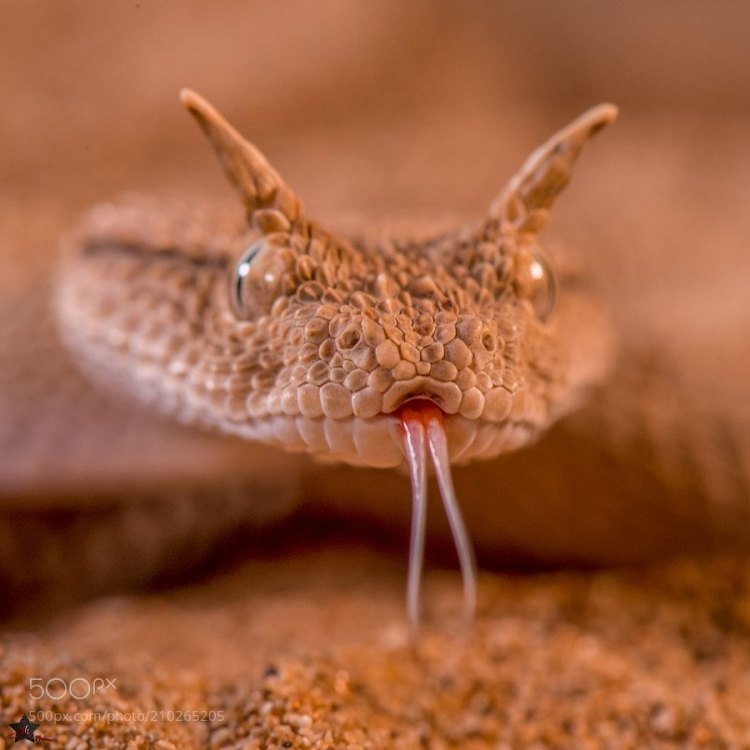
Horned Viper
- Adult Size: Small to medium-sized
- Average Lifespan: 10-15 years
- Reproduction: Sexual
- Reproductive Behavior: Males engage in combat for access to females
- Sound or Call: Hissing
- Migration Pattern: Not migratory
- Social Groups: Solitary
- Behavior: Nocturnal and secretive
- Threats: Habitat loss, illegal pet trade
- Conservation Status: Least Concern
- Impact on Ecosystem: Top predator in its habitat
- Human Use: Not commonly used by humans
- Distinctive Features: Horns above the eyes and a thick, triangular-shaped head
- Interesting Facts: Can bury itself in sand, has heat-sensing pits on its head
- Predator: Birds of prey, large mammals
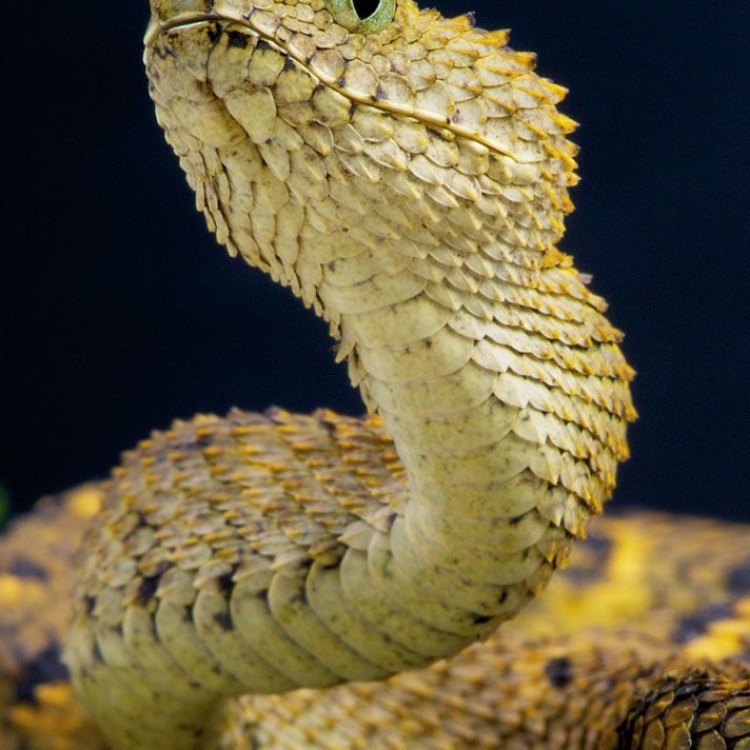
Cerastes cerastes
The Horned Viper: A Mysterious and Captivating Creature
In the desert landscapes of Africa and the Middle East, there is a creature that stands out amongst the arid sands and rocky terrain. Its distinctive features make it an intriguing sight for those fortunate enough to come across it. The horned viper, also known as the cerastes or Saharan horned viper, is a small to medium-sized snake that commands attention with its unique physical characteristics and behavior.Adult horned vipers can range from 2-3 feet in length, and their average lifespan is 10-15 years PeaceOfAnimals.Com. Unlike some reptiles, their reproductive behavior is sexual and requires the participation of both male and female snakes. But what sets this species apart is the fierce competition between males for access to females during mating season.
Reproduction is communicated through a hissing sound, one of the few vocalizations this secretive serpent makes. During mating season, males engage in combat, pushing and shoving each other with their horns in hopes of impressing a female. It's a sight to behold, as this behavior is rarely seen in any other species of snakes.
Horned vipers are not migratory; they prefer to stay in one area, making them solitary creatures. They are most active at night, using their excellent vision to hunt small mammals and birds. Their nocturnal behavior and elusive nature make them difficult to study in their natural habitat, adding to their mystery.
The horned viper's habitat is often threatened by human activities such as agriculture, urbanization, and industrialization, leading to habitat loss Husky Jack. Additionally, the illegal pet trade also poses a threat to this species. With their unique appearance and behavior, they may be desirable to some as exotic pets, leading to their capture and sale on the black market.
However, despite these threats, the horned viper's conservation status is currently listed as Least Concern by the International Union for Conservation of Nature (IUCN). This status is due to the species having a relatively stable population and a wide range of distribution in their native habitats. Nevertheless, continued monitoring and efforts to protect their habitat are essential to ensure their survival.
One of the most intriguing aspects of the horned viper is its role in the ecosystem. As a top predator in its habitat, it plays a crucial role in maintaining balance and biodiversity. Being an ambush predator, it keeps prey populations in check, preventing overgrazing or overpopulation of certain species. Without this species, the ecosystem could experience dramatic shifts, leading to potential negative impacts.
Despite being a top predator, the horned viper poses little threat to humans. Its secretive nature and preference for avoiding human interactions mean that encounters with humans are rare. Additionally, they are not commonly used by humans, unlike some other snake species that are often hunted for their skin or venom.
The horned viper's most distinctive feature, as the name suggests, is the pair of horns above its eyes. These horns are not for show but serve a practical purpose. As desert-dwelling creatures, they are well adapted to their environment, and the horns help them navigate through the sandy terrain. By pushing the sand away with their horns, they can create a path to burrow themselves and hide from predators or hunt their prey.
Speaking of hunting, the horned viper has another unique feature that aids in its success — heat-sensing pits on its head. These pits are highly sensitive to infrared radiation, allowing the viper to detect the body heat of its prey. This adaptation is incredibly advanced and gives the horned viper an edge over its prey, especially at night when visibility is low.
Despite being a top predator, the horned viper does have its own set of predators. Birds of prey, such as eagles and hawks, are one of their main predators, along with large mammals like foxes and jackals. However, the horned viper has its own methods of protection. Its camouflage and ability to bury itself in the sand make it challenging to spot, and its venomous bite acts as a defense mechanism against predators.
In conclusion, the horned viper is a captivating and mysterious creature, with its distinctive horns and heat-sensing pits making it stand out in its desert habitat. From its reproductive behavior to its top predator status, this species has a unique role in its ecosystem. While it may face threats from human activities, its population remains stable, and efforts continue to preserve its habitat. The horned viper may not be commonly seen or used by humans, but it remains an essential and fascinating part of the natural world.
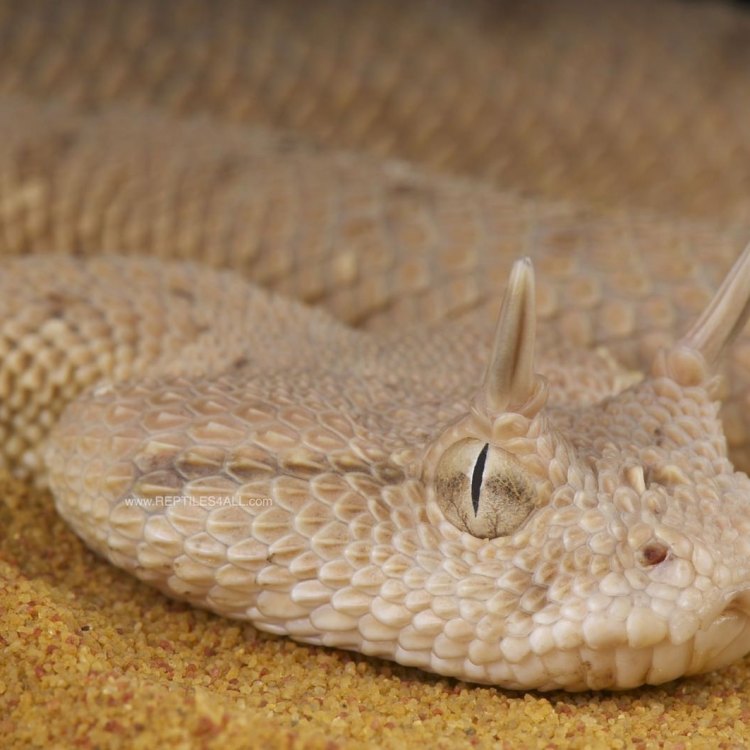
The Horned Viper: A Fascinating Creature of the Desert
Disclaimer: The content provided is for informational purposes only. We cannot guarantee the accuracy of the information on this page 100%. All information provided here may change without prior notice.

